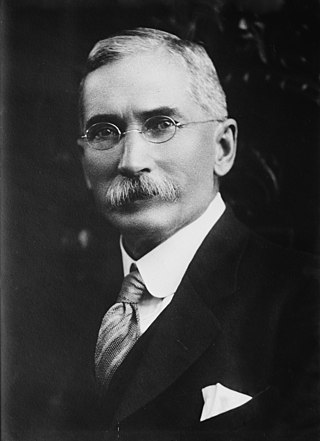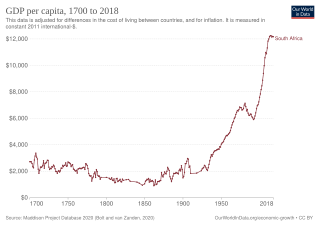Immorality Act was the title of two acts of the Parliament of South Africa which prohibited, amongst other things, sexual relations between white people and people of other races. The first Immorality Act, of 1927, prohibited sex between whites and blacks, until amended in 1950 to prohibit sex between whites and all non-whites. The second Immorality Act, of 1957, continued this prohibition and also dealt with many other sex offences. The ban on interracial sex was lifted in 1985, but certain sections of the 1957 act dealing with prostitution remain in force as the "Sexual Offences Act, 1957".

Coloureds refers to members of multiracial ethnic communities in South Africa who may have ancestry from African, European, and Asian people. The intermixing of different races began in the Cape province of South Africa, with Dutch settlers, Bantu, and Malay slaves intermixing with the indigenous Khoi tribes of that region. Later various other European nationals also contributed to the growing mixed race people, who would later be officially classified as coloured by the apartheid government in the 1950s.
In South Africa, Asian usually refers to people of South Asian ancestry, more commonly called Indians. They are largely descended from people who migrated to South Africa in the late 19th and early 20th century from British ruled South Asia.

The National Party, also known as the Nationalist Party, was a political party in South Africa from 1914 to 1997, which was responsible for the implementation of apartheid rule. The party was an Afrikaner ethnic nationalist party, which initially promoted the interests of Afrikaners but later became a stalwart promoter and enactor of white supremacy, for which it is best known. It first became the governing party of the country in 1924. It merged with its rival, the SAP, during the Great Depression, and a splinter faction became the official opposition during World War II and returned to power. With the National Party governing South Africa from 4 June 1948 until 9 May 1994, the country for the bulk of this time was only a de jure or partial democracy, as from 1958 onwards non-white people were barred from voting. In 1990, it began to style itself as simply a South African civic nationalist party, and after the fall of apartheid in 1994, attempted to become a moderate conservative one. The party's reputation was damaged irreparably by perpetrating apartheid, and it rebranded itself as the New National Party in 1997 before eventually dissolving in 2005.

General James Barry Munnik Hertzog, better known as Barry Hertzog or J. B. M. Hertzog, was a South African politician and soldier. He was a Boer general during the Second Boer War who served as the third prime minister of the Union of South Africa from 1924 to 1939. Hertzog advocated for the development of Afrikaner culture and was determined to prevent Afrikaners from being excessively influenced by British culture.

The Prohibition of Mixed Marriages Act, Act No. 55 of 1949, was an apartheid-era law in South Africa that prohibited marriages between "whites" and "non-whites". It was among the first pieces of apartheid legislation to be passed following the National Party's rise to power in 1948. Subsequent legislation, especially the Population Registration and Immorality Acts of 1950, facilitated its implementation by requiring all individuals living in South Africa to register as a member of one of four officially defined racial groups and prohibiting extramarital sexual relationships between those classified as "white" on the one hand and those classified as "non-White" on the other. It did not criminalize sexual relationships between those classified as "non-Europeans".
Chinese South Africans are Overseas Chinese who reside in South Africa, including those whose ancestors came to South Africa in the early 20th century until Chinese immigration was banned under the Chinese Exclusion Act of 1904. Chinese industrialists from the Republic of China (Taiwan) who arrived in the 1970s, 1980s and early 1990s, and post-apartheid immigrants to South Africa now outnumber locally-born Chinese South Africans.
In South Africa under apartheid, and South West Africa, pass laws served as an internal passport system designed to racially segregate the population, restrict movement of individuals, and allocate low-wage migrant labor. Also known as the natives' law, these laws severely restricted the movements of Black South African and other racial groups by confining them to designated areas. Initially applied to African men, attempts to enforce pass laws on women in the 1910s and 1950s sparked significant protests. Pass laws remained a key aspect of the country's apartheid system until their effective termination in 1986. The pass document used to enforce these laws was derogatorily referred to as the dompas.

Apartheid was a system of institutionalised racial segregation that existed in South Africa and South West Africa from 1948 to the early 1990s. Apartheid was characterised by an authoritarian political culture based on baasskap, which ensured that South Africa was dominated politically, socially, and economically by the nation's minority white population. In this minoritarian system, there was social stratification, where white citizens had the highest status, followed by Indians and Coloureds, then Black Africans. The economic legacy and social effects of apartheid continue to the present day, particularly inequality.

Group Areas Act was the title of three acts of the Parliament of South Africa enacted under the apartheid government of South Africa. The acts assigned racial groups to different residential and business sections in urban areas in a system of urban apartheid. An effect of the law was to exclude people of colour from living in the most developed areas, which were restricted to Whites. It required many people of colour to commute large distances from their homes to be able to work. The law led to people of colour being forcibly removed for living in the "wrong" areas. People of colour, who were the majority at the time, were given much smaller areas to live in than the white minority. Pass Laws required people of colour to carry pass books and later "reference books", similar to passports, to enter the "white" parts of the country.
Honorary whites was a political term that was used by the apartheid regime of South Africa to grant some of the rights and privileges of whites to those who would otherwise have been treated as non-whites under the Population Registration Act. It was enacted by the then ruling National Party (NP).
The system of racial segregation and oppression in South Africa known as apartheid was implemented and enforced by many acts and other laws. This legislation served to institutionalize racial discrimination and the dominance by white people over people of other races. While the bulk of this legislation was enacted after the election of the National Party government in 1948, it was preceded by discriminatory legislation enacted under earlier British and Afrikaner governments. Apartheid is distinguished from segregation in other countries by the systematic way in which it was formalized in law.

Springbok colours is the name given to green and gold blazers awarded to members of the South Africa national rugby union team. They were historically awarded to teams and individuals representing South Africa in international competition of any sport, following their creation in 1906. With the arrival of South Africa's new post-apartheid government in 1994, the name Springbok was abandoned by the various control boards since they felt that the term had been abused by the previous apartheid governments, and stigmatised by the anti-apartheid movement. An exception was made in the case of the national rugby union team, who have retained the practice of awarding colours.

Prior to the arrival of the European settlers in the 17th century the economy of what was to become South Africa was dominated by subsistence agriculture and hunting.

Internal resistance to apartheid in South Africa originated from several independent sectors of South African society and took forms ranging from social movements and passive resistance to guerrilla warfare. Mass action against the ruling National Party (NP) government, coupled with South Africa's growing international isolation and economic sanctions, were instrumental in leading to negotiations to end apartheid, which began formally in 1990 and ended with South Africa's first multiracial elections under a universal franchise in 1994.

The Industrial Conciliation Act, 1956, formed part of the apartheid system of racial segregation in South Africa. It prohibited the registration of any new 'mixed' unions and imposed racially separate branches and all-white executive committees on existing 'mixed' unions. It prohibited strikes in 'essential industries' for both black and white workers and banned political affiliations for unions. Clause 77 legalized the reservation of skilled jobs to white workers, as the Bantu Building Workers Act of 1951 had done in the construction trade, 'to ensure that they will not be exploited by the lower standard of living of any other race'.
There is a small community of Japanese expatriate people living in or people who were born in South Africa with Japanese ancestry. Most of them live in Johannesburg and other major cities.

The Representation of Natives Act No 12 of 1936 was legislation passed in South Africa which further reduced black rights at the time. The Cape province had a qualified franchise which had allowed a small number of blacks in the Cape to vote for the common roll in terms of the Cape Qualified Franchise. The qualified franchise dated back to the pre-Union period, when the Cape was a separate British colony; it also excluded poorer white men. The 1936 Act removed blacks to a separate roll – and halted the right to run for office; other earlier legislation removed the qualifications imposed in the Cape on whites.

The Cape Qualified Franchise was the system of non-racial franchise that was adhered to in the Cape Colony, and in the Cape Province in the early years of the Union of South Africa. Qualifications for the right to vote at parliamentary elections were applied equally to all men, regardless of race.
Thembalethu is a township in Western Cape, South Africa. The township is on the Garden Route and falls part of the George Municipality. The name of the township "Thembalethu" is Xhosa meaning "Our Hope".









